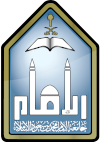Signs of the Noble Qur'an's Punctuation and its Direction among Eastern and Western Scholars (Part Three) (Comparative Collection and Study)
Keywords:
punctuation marks , punctuation guidance , Al-Mashariqah School , Al-Magharibah SchoolAbstract
Abstract:
In this research, a group of grammatical and form signs used by the Levant and Moroccans to adjust the words of the Holy Qur’an was studied. To protect it from distortion, and to carefully preserve it from corruption, I have endeavored to highlight the methods of attaching these signs according to each group, and I have mentioned the arguments and reasons to prove these signs according to both groups.
The research consists of an introduction, four sections, and a conclusion in which the most prominent results are mentioned. The introduction contains the research plan, methodology, objectives, importance of the topic, and previous studies. As for the introduction, it includes: defining the science of control and its most famous schools.
The main objectives of the research: for the reader to understand the arguments and reasons for which the grammatical marks found in the Qur’ans in the East and West were attached to this form. The research also aims to introduce the great efforts of the nation’s scholars, both East and West, in caring for the Holy Qur’an in its recitation, memorization, drawing, and memorization.
The most prominent findings of the research: that the signs that the dotted scholars set to control the Qur’an were put in place with knowledge, knowledge, intention, and verification, and that the Levantines and Moroccans alike tried in their choices to be correct and correct, and they intended a sound path of language and analogy. And no sign of accuracy is devoid of a sign that guides the reader and helps him know the ruling and the method of reading.



